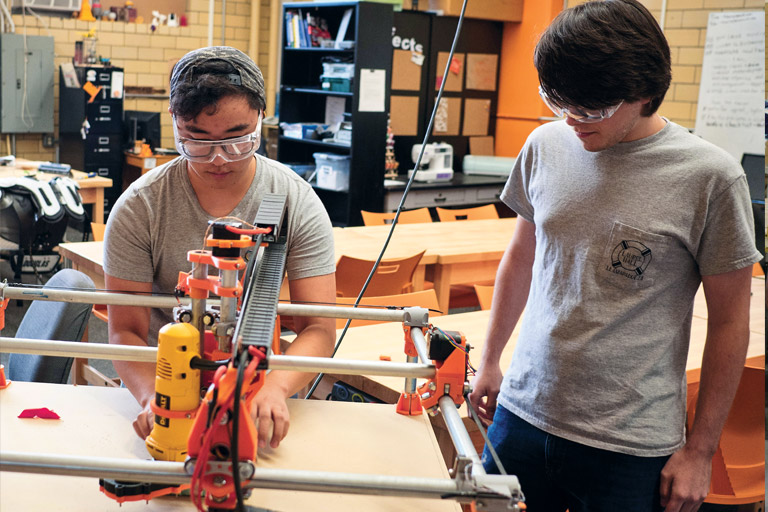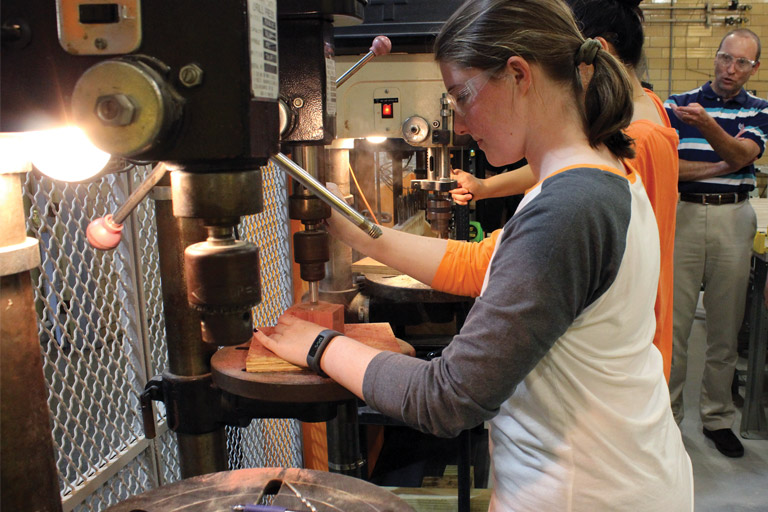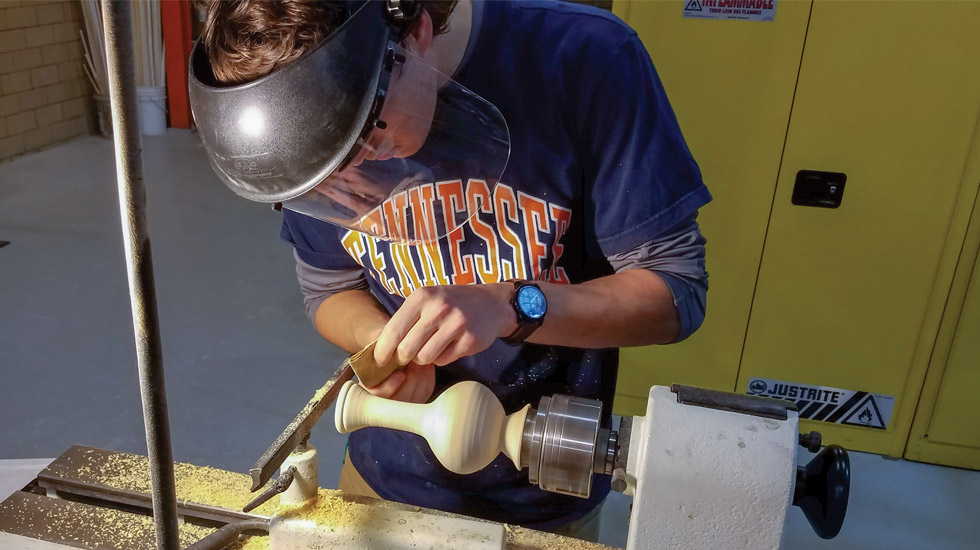Making Space for Makers
—Richard Bennett, Director, Engineering Fundamentals
The origin of what is now the Innovation and Collaboration Studio dates back 20 years to 1998 and the creation of the engage™ Engineering Fundamentals program.
Championed by then-dean Jerry Stoneking and backed by NSF funding, the program that now bears Stoneking’s name has served as a stepping-off point for freshmen entering the college since it launched. In more recent years, a key component has become the Innovation and Collaboration Studio on the lower floor of Perkins Hall.
“The ICS space certainly draws in new students,” said new Edwards Assistant Dean and Director of Integrated Engineering Design Keith Stanfill.
“They come through on tours and see current students working and it allows them to see tangible possibilities. They see applications of engineering, see the help they can get, see the opportunity at UT. That’s super powerful.”
It’s also purposeful. Richard Bennett, director of engage™, recognized the value of having a “wow” factor for the space to make a solid first impression on freshmen and inspire them to become involved. His team also encourages work across class-levels.
“When you look around the country, a lot of places have freshman- or senior-specific spaces, sometimes not even in the same building or area of campus,” Bennett said. “We very much want our freshmen and seniors to work alongside one another. We had a specific vision to be together.”
Tommy Duong, who, along with Michael Allen, helps run the ICS and advise students, noted that such interactions are beneficial to both upperclassmen, who might be inspired by an idea from a younger student, and underclassmen, who pick up on tricks and techniques their older collaborators have learned over the years.
Duong said that while he and Allen supervise, it’s really the students who create the culture in the lab, making their ability to work with one another that much more important.

Vol Means All
Sometimes, though, creating an inclusive culture requires direct intervention. In years past, Allen and Duong observed students can be quick to fall into long-held gender stereotypes, with men doing the physical work and women pigeonholed into the design aspects of projects.
Recognizing this issue, they started a series of women-only classes, aimed at building both confidence and experience.
“We do classes of 12 students at a time to help them grow as makers and empower them to have more self-assurance when they are in mixed groups,” Allen explained. “Some of them come back to do projects on their own. We had one student who said that she wished she’d done it earlier, because she wouldn’t have let herself be pushed to the side like she had been before.”
The initiative taken by Allen and Duong to resolve the issue hits one of Stanfill’s main goals of the lab; that he doesn’t just want all students to feel invited, but rather to actually take part.
Another group that can sometimes be overlooked in engineering despite its inherent importance has also found its niche in ICS: artistic thinkers.
Stanfill, whose motto for ICS is “Cultivating Creative Confidence,” noted that engineers can get trapped thinking only in technical ways.
“There’s something to be said for the artistic part of your brain being engaged,” said Stanfill, citing data that students in sciences with artistic traits can get burned out if their artistic side is not nurtured. “There’s a joy that comes with making things with your own hands. Our more creative students can get disillusioned with theory and fundamentals, but the ICS can give them tangible proof of concept.”

Going Above and Beyond
Haslam College of Business alumnus Bradley Fraser Kerr, Sr. (MBA Marketing ’73) and his wife Joyce recently supported the purchase of several essential new pieces of equipment for the ICS, including a laser cutter and engraving system, a table saw and accessories, a sander, and a cordless tool bank.
Going to Work
There are plenty of shiny, state-of-the-art machines in the ICS space, including the standard icon of any modern maker space, the 3D printer. But what stands out as a practical and vital skill is wood working.
“It’s a lot easier to train someone on a wood lathe than it is, say, a laser cutter,” Allen said. “It gives us a chance to get them some hands-on experience quickly while they get training on things they might have never seen or heard of.”
“Wood is a de facto soft material learning experience,” Stanfill adds. “It can stand in for a number of more expensive things, such as composites, allowing students a chance to experiment without fear of wasting a costly material.”
Through wood, the lab mimics the real world: no business scales up a product without first running smaller tests.
“If a picture is worth one thousand words, then a prototype is worth one thousand pictures,” Stanfill said. “Innovation is about failing fast and failing cheap. That’s how you learn. Failure isn’t a dirty word in innovation.”
ICS helps students innovate, but changes are coming that will revolutionize the entire program.
